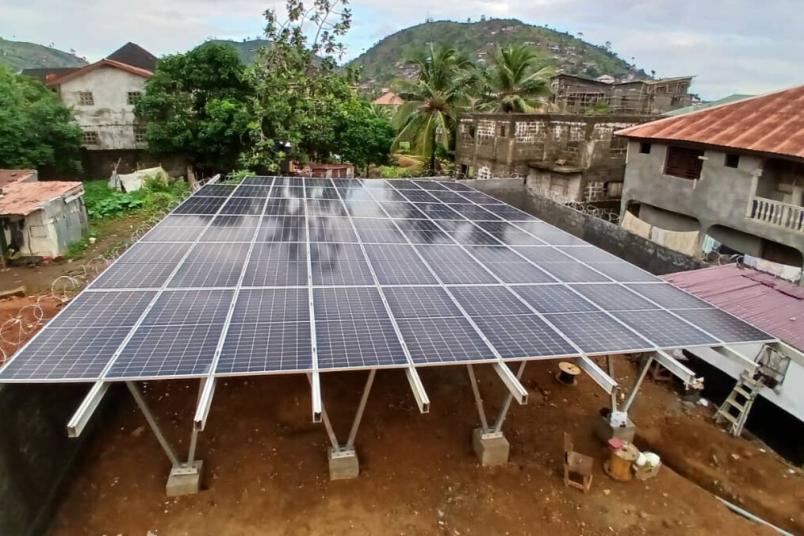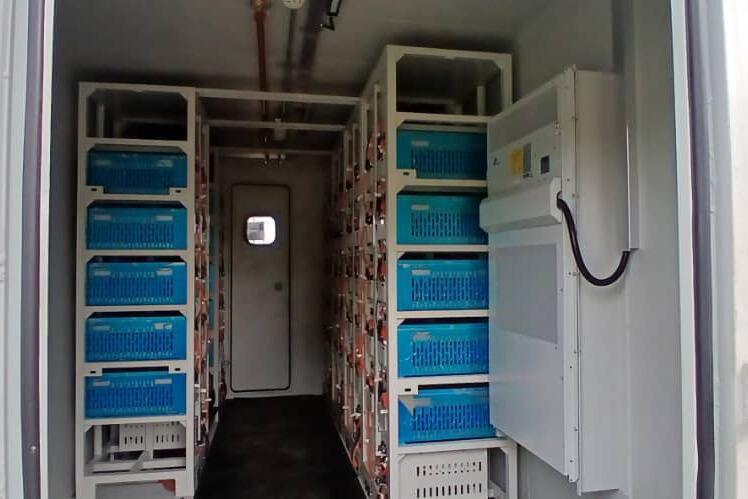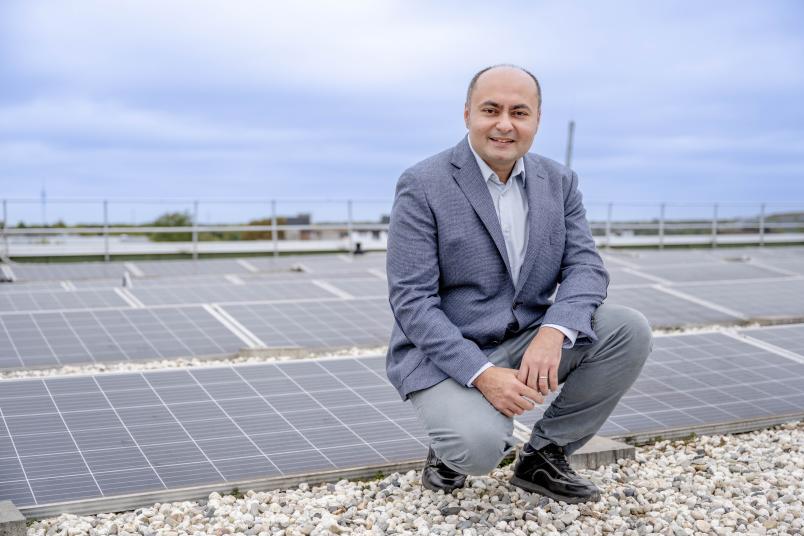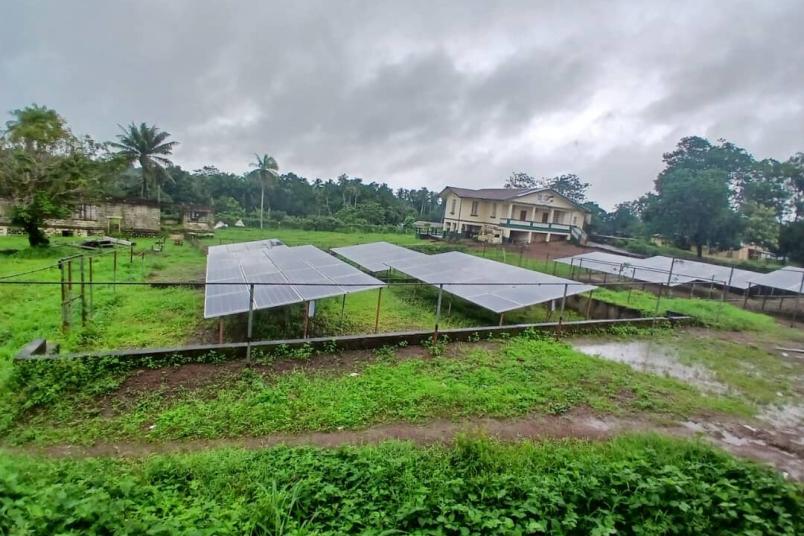Development research
“People Are Just Happier”
Solar power boosts the economy and improves everyday life in rural areas with low per capita incomes. Women benefit in particular.
Every day, approximately two billion people worldwide use open flames, wood, coal, animal dung, or kerosene to heat up their food for a warm meal. “This releases about one gigaton of CO2 per year,” says Dr. Elkhan Richard Sadik-Zada. For the development and energy economist from the Institute of Development Research and Development Policy (IEE) and the Center for Environmental Management, Resources, and Energy (CURE), this knowledge was the starting point for various research projects on different continents concerning the sustainability of solar power supply.
In rural areas of Cambodia, Sierra Leone, Uganda, the Pamir Mountains of Central Asia, and former war zones in northern Syria, there is no central power supply. In Syria, such infrastructure once existed but has been destroyed by the war. In all of these regions, the people most heavily affected by poverty largely depend on what they are able to grow themselves, within the so-called subsistence agriculture.

The villages where the researchers conducted interviews included locations in Sierra Leone.
Through international development cooperation projects, rural areas in developing countries are being equipped with solar systems, among other things, in order to provide access to electricity, particularly to remote villages suffering from poverty and/or the consequences of conflict. In rural areas, and particularly in remote and mountainous regions of low income countries, electrification oftentimes can only be achieved through decentralized off grid solar technologies. “Such systems typically take the form of community-based mini-grids capable of supplying entire villages or stand-alone photovoltaic units with integrated battery storage for individual households,” notes Sadik-Zada. How does this power supply impact the lives of people who live in the villages? Does it really reduce CO2 emissions from cooking? And does it have any other effects? To answer these questions, field research interviews were conducted with villagers in rural regions. The data are usually obtained by master’s students on site.
“Because we can’t conduct a before-and-after comparison, we’re contrasting communities with and without solar-based electrification that are comparable in their key characteristics,” Sadik-Zada explains. A village usually has 100 to 350 inhabitants. Rural households are matched via a suitable statistical process to ensure that their responses can be compared.
How power changes daily life
“The impact that electrification has had on the daily lives of the population is striking,” says Sadik-Zada about the results. “It starts with the agriculture.” Electricity makes it possible for smallholder farming households to operate electric pumps and use groundwater to irrigate their fields. This in turn at least partially alleviates the negative impacts of climate change, such as extensive periods of drought. It also gives people the opportunity to grow more than they need for themselves and to sell part of their yields at the market, which increases their income. It also facilitates the modernization of traditional agricultural technologies.

For the sustainable operation of solar systems, it is important that there is someone who takes care of them on a permanent basis.
The availability of electric lighting also lets shopkeepers keep their establishments open later into the evening. Hairstylists or small grocery stores can thus conduct more business and earn more income. “On average, we noticed that solar power increased household income in the previously non-electrified villages by 15 to 20 percent,” reports Sadik-Zada.
A Contribution to Gender Equality
According to the studies, women in particular benefit from electrification. This is because it is women who spend up to two hours every day gathering fuel for the hearth. It is often women who are standing next to the smoking hearth at home, developing respiratory and eye problems. “Cooking with an electric stovetop eliminates this health risk, and there is more time for other activities,” says Sadik-Zada. “Women often use this spare time to make handicrafts that they then sell at the market to help improve their income situation. Or they use the time to study and make themselves independent.” It has also been proven that, with electrical lighting, children on average spend more time studying for school.
“Another core area that indirectly benefits from electrification is finance,” Sadik-Zada explains. About one billion people worldwide have no bank account. This is an obstacle for economic development. In many countries, especially in parts of Africa, mobile phones are increasingly taking on the role of conventional bank accounts. This is made possible by mobile money systems operated by wireless service providers. Users are given a digital account linked to their phone number, entirely without a formal bank account. Simple mobile phones can thus be used to conduct payments or deposit money. “Of course, you need power to use a mobile phone.” A reliable supply of solar power could provide access to digital means of payment even in remote, rural areas, thereby making a significant contribution to financial inclusion.
What about cooking, the actual impetus for the studies? Up to 80 percent of people in the villages provided with solar power use electricity to cook. The remainder prefer to use open flames because they are accustomed to it or they believe the food tastes better with it. “Immense CO2 reductions are clearly possible with this,” says Sadik-Zada. “But this is not where the positive effects of electrification end. Electricity access associates with a greater level of happiness.”

Elkhan Richard Sadik-Zada is convinced that solar power in developing countries can only do good.
“In the post-implementation phase, however, it’s important that there is someone in the village who is responsible for maintaining and cleaning the solar unit,” says Sadik-Zada. The panels accumulate dust and become less efficient over time. But once someone has been appointed to take care of this, subsidization is no longer required after three to five years and the solar units can serve rural communities for about 30 years.

Nobody loses!
“Solar off-grid electrification does not automatically nor suddenly lead to economic growth and modernization, but it does contribute to strengthening the resilience of livelihoods,” explains Sadik-Zada, who, partially due to these studies, is listed among the top 1 percent of most frequently cited economists in the Stanford University-compiled global database of standardized citation indicators. “There is, however, a light at the end of the tunnel, specifically with regard to the resilience of the livelihoods of the most vulnerable population groups in the world’s poorest regions.” He explains that solar electrification is well thought out and fairly designed to promote economic development in Africa and other regions. The growing demand for solar panels and irrigation technologies is also leading to stronger technical cooperation of the Majority World with countries that provide development aid. These countries contribute their technologies, knowledge, and experience to international projects – for example, within the framework of bilateral or multilateral developmental cooperation. “Nobody loses! Electrification initiated, often only through development cooperation, creates no losers. Both recipient and donor countries benefit from such electrification projects,” he says.

